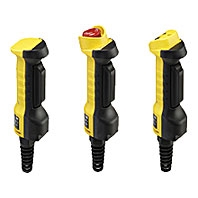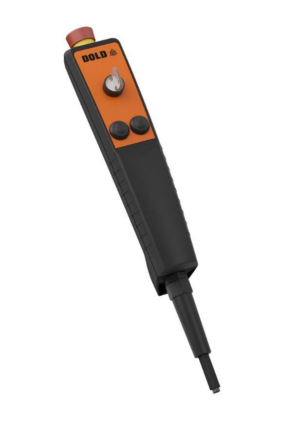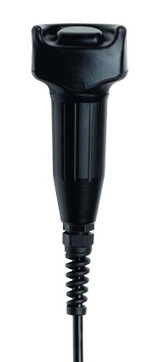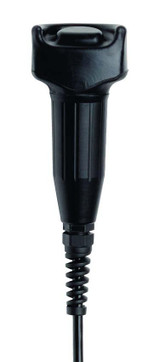Overview of Safety Enabling Switches Definition and Purpose Safety enabling switches, often referred to as 3-position enabling switches or grip switches, are handheld or integrated…
Overview of Safety Enabling Switches

Definition and Purpose
Safety enabling switches, often referred to as 3-position enabling switches or grip switches, are handheld or integrated devices that allow machinery to operate only when held in a specific position—typically the middle or “ON” position. If released or squeezed too tightly, the machine stops, preventing injury during setup, maintenance, or troubleshooting. This OFF–ON–OFF design ensures a safer situation for machine operators, especially in high-risk applications like industrial robots, pendants for robots, or portable safety devices.
These switches are essential for scenarios requiring manual override or maintenance operation, granting operators temporary control while ensuring protection against manipulation or accidental start-up. The stable pressure required for operation helps mitigate responses in panic situations or shock situations, a critical feature for precise operator control.
Historical Development
Initially used in robot programming and maintenance, early enabling switches were mechanical, bulky, and lacked ergonomic considerations. Over time, they evolved into modern 3-position grip switches with lightweight design, modular design, and universal connection types (such as M12 5-pin connectors or cable gland options). The integration of features like activity sensors, momentary operation switches, dual-channel E-stop buttons, and function buttons expanded their use into broader safety installations and user applications.
Recent developments include RFID-enabled safety switches, vibration sensors, and AS-Interface Safety compatibility, supporting safe evaluation devices and connection options for various machines. Brands like Euchner, DOLD and Autonics now offer pre-configured devices, line-up models, and specialized units like the 3-Step-Enabling Switch ZEUS, providing enhanced protection function and compliance with major industry regulations and robotics safety standards.
Broader Integration with Safety & Automation Systems
In modern industrial environments, enabling switches are only one part of an integrated safety architecture. These systems will work in tandem with various critical components such as safety PLCs, safety contactors or safety light curtains (including muting light curtains) to ensure real-time hazard detection and safe machine shutdown. Common peripheral safety devices like the emergency stop button, two hand station, and emergency stop rope pull are all effectively managed by the safety PLC’s logic structure.
Advanced installations frequently incorporate safety relays, safety non-contact switches, RFID switches, mechanical interlock switches, and solenoid locking switches—each adding specific protective functions to the machinery. To maintain continuous system health, engineers also deploy standstill monitors, speed monitors, soft starters, and reversing contactors within their automation frameworks. For measuring the product itself, solutions such as measurement light curtains can be integrated.
Beyond motion and logic safety, electrical condition monitoring is equally essential. Devices like insulation monitors, battery monitors, current monitors, voltage monitoring relays, phase sequence relays, undervoltage relays, and undercurrent monitoring relays are often integrated to detect anomalies in power flow or equipment performance, with this data displayable on HMI Touch Panels or similar systems. To support reliable operation, high-quality power relays and regulated power supplies are essential.
Key Features of Safety Enabling Switches
Off-On-Off 3-Level Mechanism
The hallmark of a safety enabling switch is its 3-position (OFF-ON-OFF) functionality. This three-stage switch operates in the middle position (ON) during normal conditions. If the operator either releases the grip or squeezes it tightly—common reactions during panic situations—the switch returns to the OFF state, immediately stopping the machine operation. This feature prevents harmful motion in emergency or stress scenarios and is essential in environments with industrial robots, maintenance tasks, or manual machine overrides.
This 3-position enabling switch design supports redundant switches, ensuring that both mechanical and electrical contacts are monitored simultaneously. Models like the Off-On-Off 3-level enabling switch or the 3-Position Snap Action Enabling Switch meet strict safety functions and are commonly used in robot programming pendants, machine tool access zones, and safety installations where the risk of harmful movement is significant.
One-Hand Operation
Ergonomically optimized for portable device use, modern enabling switches support one-hand operation, allowing for precise operator control even in constrained spaces. The grip switches are intentionally shaped to support both left- and right-handed users, enhancing comfort and reducing fatigue. This design allows machine functions to be controlled while maintaining stable pressure, minimizing the chance of false triggering due to hand movement or vibrations.
Many enabling switches feature an intentional design that accommodates optional jog buttons, momentary button types, or reset buttons, enabling versatile operator control during robot setup, motion testing, or tool positioning.
Advanced Diagnostic Capabilities
Modern safety enabling switches now include advanced diagnostics for both safety and maintenance efficiency. Integrated activity sensors, vibration sensors, and diagnostic outputs provide real-time data for monitoring the switch’s status. Features like status LEDs, universal connection options (e.g., M12 connectors, plug brackets, or cable glands), and control circuit devices help ensure secure connection and consistent performance.
These capabilities allow integration with safe evaluation devices, AS-Interface Safety, or PROFIsafe systems. The result is not just reliable operator input, but full transparency for engineers and safety personnel to monitor switch conditions, detect anomalies, and ensure conformance to major industry regulations and robotics safety requirements.
Technical Specifications
Durability and Material Composition
Enabling Switches like the Autonics SFEN series or Euchner ZS series are built for longevity, featuring robust plastic or alloy housings with IP-rated protection for resistance to dust, water, and oil. Internal components are rated for millions of operations, ensuring reliability in repetitive use. Reinforced brackets and shock-resistant design help maintain structure during maintenance tasks and emergency stops.
Compatibility with Safety Systems
These switches are compatible with AS-Interface Safety, PROFIsafe, and traditional control circuit devices, ensuring smooth integration into existing safety architectures. Dual-channel inputs, redundant switch configurations, and compatibility with safe evaluation devices make them ideal for advanced machine control systems.
Environmental and Safety Standards
All SFEN models comply with EN ISO 12100, IEC 60204-1, and major industry regulations for operator safety and machine interaction. They are suitable for use in harsh environments, including high-humidity, high-vibration, or temperature-variable conditions.
Installation and Maintenance
Installation Guidelines
Installation is straightforward using standard mounting brackets, plug connections, or cable glands. Clear labelling, modular designs, and secure connection options make these switches easy to integrate into new or retrofitted machinery. For best performance, install switches in operator-accessible locations and ensure stable pressure can be comfortably maintained.
Best Practices for Maintenance
Regular visual inspection and functionality testing are critical. Check for wear on grip surfaces, damage to connector cables, and ensure the middle position activates as expected. Clean the switch body with non-corrosive agents and confirm LED indicators or diagnostic outputs are working properly.
Troubleshooting Common Issues
If a switch fails to maintain the ON position, inspect for mechanical wear, loss of spring tension, or compromised internal contacts. Communication issues may stem from cable damage or misconfigured safe evaluation devices. For best results, use OEM-recommended accessories and consult detailed product manuals during diagnostics.
Integration with Existing Systems
Customization Options
Optional configurations include LED status indicators, RFID sensor integration, additional buttons, and various connector types (angled, bracketed, or in-line). Clients can select models based on grip force, protection class, and user application needs—such as left-handed accessibility or compact form factors for smaller enclosures.
Importance of Safety Enabling Switches
Enhancing Operational Safety
By allowing machinery to run only when deliberately engaged, safety enabling switches reduce risk during maintenance operation, setup, or testing. They protect against harmful motion, enable precise machine operator control, and provide a fail-safe in emergencies.
Role in Safety-Critical Environments
These switches are indispensable in environments where manual interaction with active machinery is required. Used in robotic arms, tool changers, and automated presses, they help achieve high performance levels while meeting safety functions under major robotics industry requirements.
Future Trends in Safety Enabling Switches
As automation evolves, safety enabling switches are advancing with features like smart diagnostics, wireless variants, and integrated analytics for predictive maintenance. Expect future models to support cloud connectivity, machine learning-based safety analysis, and more refined operator ergonomics tailored to reduce fatigue and improve reaction time. With growing demand across all regions and industries, enabling switches will remain central to next-generation safety architecture.













